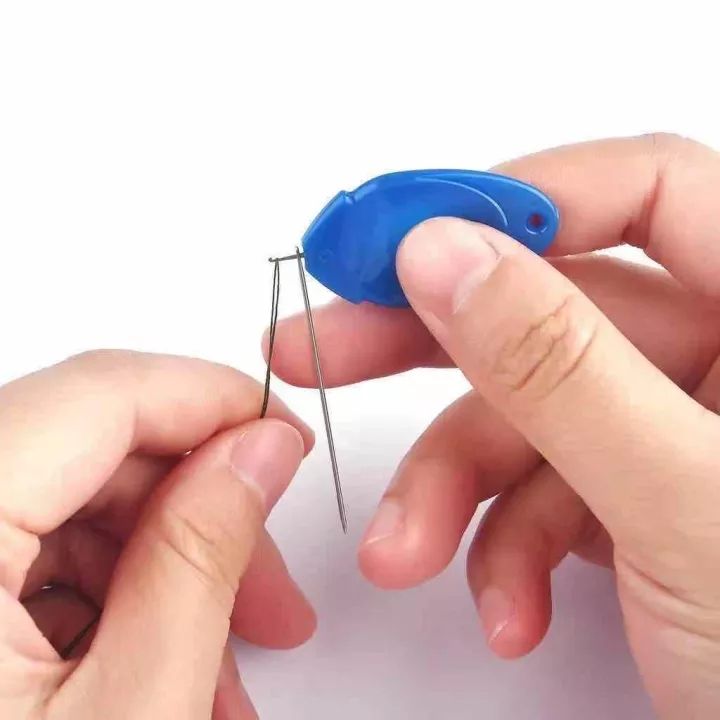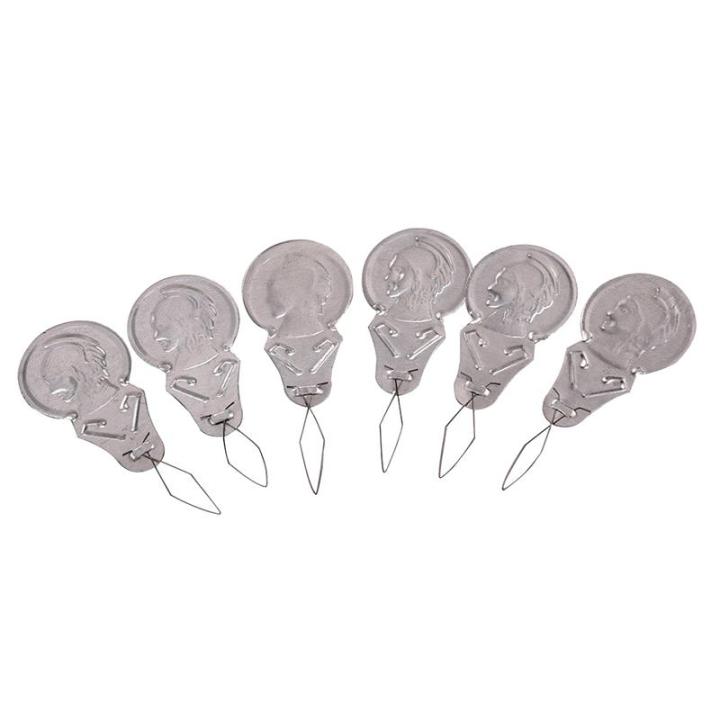Introduction
Sewing has been a beloved craft for centuries, allowing people to create beautiful garments and crafts. However, threading a needle can be a frustrating and time-consuming task, especially for those with poor eyesight or shaky hands. That’s where needle threaders come in. These handy tools make threading a needle a breeze and are a must-have for any sewing enthusiast. In this comprehensive guide, we will explore everything you need to know about needle threader tool, from their different types and uses to tips for using them effectively.
Part 1: Types of Needle Threaders
Level 1: Manual and Automatic Needle Threaders
Needle threader tool comes in two main types: manual and automatic. Manual needle threaders are simple tools with a thin wire or loop that helps guide the thread through the eye of the needle. Automatic needle threaders, on the other hand, are mechanical devices that use a built-in spring mechanism to push the thread through the needle’s eye with a simple press of a button.
Level 2: Pros and Cons of Each Type
Both manual and automatic needle threader tools have their pros and cons. Manual threaders are simple, affordable, and portable, making them ideal for travel or small sewing projects. Automatic threaders, on the other hand, are quicker and easier to use, especially for those with dexterity or vision issues. However, they can be bulkier and more expensive than manual threaders.
Part 2: Uses of Needle Threaders
Level 1: Sewing and Embroidery
Needle threaders are essential tools for sewing and embroidery. Whether you are working on a delicate hand-sewn project or a detailed embroidery design, a needle threader tool can save you time and frustration by quickly and effortlessly threading your needle.
Level 2: Quilting and Mending
Quilting and mending are two other popular sewing activities that can benefit from the use of a needle threader tool. Quilting often involves working with multiple layers of fabric and thick thread, making it difficult to thread a needle manually. A needle threader can make this process much more manageable. Likewise, when mending clothing or other items, a needle threader can help you quickly mend seams and tears without struggling to thread a needle.
Part 3: Tips for Using Needle Threaders Effectively
Level 1: Preparation and Technique
Before using a needle threader, it’s essential to prepare your needle and thread. Cut the end of your thread at a sharp angle to make it easier to thread through the needle. Additionally, hold the needle and threader steady while guiding the wire or loop through the needle’s eye to ensure a smooth and successful threading.
Level 2: Choosing the Right Threader for Your Needs
Not all needle threaders are created equal, and choosing the right one for your needs can make a big difference in your sewing experience. Consider factors such as the size of the needles you typically use, the type of thread you work with, and any dexterity or vision issues you may have when selecting a needle threader.
Part 4: Maintaining and Caring for Needle Threaders
Level 1: Cleaning and Storage
Like any tool, needle threaders require proper maintenance to ensure they work effectively. After each use, remove any excess thread or lint from the wire or loop of your threader. Additionally, store your threader in a clean, dry place to prevent rust or damage.
Level 2: Replacement and Upkeep
Over time, needle threaders may wear out or become bent, making them less effective. If you notice your threader is not working as well as it used to, it may be time to replace it. Regularly inspect your threader for any signs of damage and make replacements as necessary to ensure smooth and efficient sewing.
Part 5: The Evolution of Needle Threaders
Level 1: Historical Significance
Needle threaders have a long history, with early versions dating back to the 18th century. These early threaders were often made of metal and had intricate designs, reflecting the craftsmanship of the time. As technology advanced, needle threaders became more affordable and accessible, allowing more people to enjoy the benefits of these helpful tools.
Level 2: Modern Innovations
Today, needle threaders come in a variety of designs and materials, catering to a wide range of sewing needs. From ergonomic handles to built-in LED lights for better visibility, modern needle threaders continue to evolve to make sewing easier for all enthusiasts. As the demand for sewing and crafting grows, we can expect to see even more innovative needle threader designs in the future.
Part 6: Needle Threaders for Different Needle Types
Level 1: Specialty Needle Threaders
In addition to standard sewing needles, there are also specialty needles used for specific purposes, such as beading, quilting, or upholstery. As a result, there are needle threaders specifically designed to accommodate these unique needle types. These specialty threaders have smaller or larger wire or loop sizes to fit the varying eye shapes and sizes of specialty needles, making them an essential tool for those who work with non-standard needles.
Level 2: Benefits of Using Specialty Threaders
Using a specialty needle threader ensures that you can efficiently thread any type of needle, regardless of its size or shape. This versatility is essential for sewers and crafters who work with a variety of needle types, as it saves time and reduces frustration when switching between different needles for different projects.
Part 7: Needle Threaders for Individuals with Special Needs
Level 1: Accessibility and Inclusivity
For individuals with visual impairments, arthritis, or other dexterity issues, threading a needle can be an extremely challenging task. Needle threaders have become indispensable tools for those with special needs, providing accessibility and inclusivity within the sewing and crafting community.
Level 2: Features for Special Needs
Many needle threaders are designed with features that cater to individuals with special needs. For example, some threaders have larger handles for easy gripping, while others have built-in magnifiers or LED lights to aid those with vision impairments. These thoughtful design elements make sewing accessible to a wider range of individuals. Allowing everyone to enjoy the therapeutic and creative benefits of sewing.
Part 8: DIY Needle Threaders and Creative Alternatives
Level 1: Homemade Needle Threaders
For those who enjoy a bit of DIY, it’s possible to create homemade needle threaders using basic materials found around the house. Small pieces of wire, dental floss threaders, or even fishing line can be fashioned into makeshift needle threaders. Providing a budget-friendly and creative alternative to store-bought options.
Level 2: Eco-Friendly Alternatives
In an effort to reduce waste and promote sustainability, some sewers and crafters have turned to eco-friendly alternatives to traditional needle threaders. For example, using biodegradable materials or repurposing everyday items like paper clips or bobby pins as makeshift threaders can help minimize the environmental impact of sewing tools while showcasing resourcefulness and creativity.
Conclusion
Needle threader tool is a simple yet invaluable tool for anyone who enjoys sewing, crafting, or mending. Whether you opt for a manual or automatic threader, knowing how to effectively use and care for your tool can greatly enhance your sewing experience. Understanding the different types of needle threaders, their uses, and maintenance tips. You can make the most of this handy tool and spend less time struggling with threading needles, and more time enjoying your sewing projects.
Ultimately, needle threaders have revolutionized the sewing experience for individuals of all skill levels and abilities. Whether using a standard, specialty, or DIY threader, the convenience and efficiency they offer make them an indispensable tool in any sewing kit. Embracing innovation and creativity, needle threaders continue to play a vital role in advancing the art of sewing.



